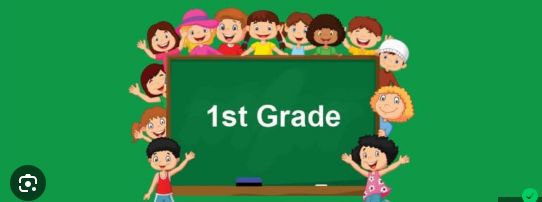Assessment Plan for First-Grade Child
1. Objective
- To evaluate the child's learning
aptitude, cognitive abilities, and readiness for first-grade curriculum.
2. Assessment
Tools
- Standardized Tests: Use age-appropriate
standardized assessments to measure reading, writing, and math skills.
- Observational Assessments: Document behaviors,
interactions, and engagement in classroom activities.
- Performance Tasks: Provide tasks that require
problem-solving and application of knowledge in real-life scenarios.
- Portfolio Assessment: Collect samples of the child's
work over time to analyze progress and skill development.
3. Components
of Assessment
- Cognitive Skills Assessment
- Use tools like the CogAT
(Cognitive Abilities Test) to assess reasoning and problem-solving
abilities.
- Academic Skills Assessment
- Conduct reading fluency tests
(e.g., DIBELS) and math readiness assessments (e.g., number recognition).
- Social-Emotional Assessment
- Use social-emotional checklists
to evaluate the child’s ability to interact with peers and manage
emotions.
4. Process
- Pre-Assessment: Begin with informal
assessments to gauge current abilities and areas of interest.
- Individual Assessments: Administer formal assessments
in a one-on-one setting to reduce anxiety and ensure focus.
- Group Activities: Observe the child during
collaborative tasks to assess teamwork and communication skills.
5. Data
Analysis
- Compile data from various
assessments to identify strengths and areas for growth.
- Compare results with
developmental benchmarks for first-grade students.
6. Feedback
and Reporting
- Share findings with parents,
providing insights into the child’s abilities and recommendations for
support.
- Create an individualized
learning plan based on assessment results to address specific needs.
7. Follow-Up
- Schedule regular check-ins to
monitor progress and adjust the learning plan as necessary.
- Implement ongoing assessments to
continually evaluate and support the child’s development.
Conclusion
This assessment
plan aims to provide a comprehensive understanding of a first-grade child's
learning capabilities, ensuring that instruction is tailored to their unique
needs.
Would you
like to make any adjustments or ask more about any specific section?
Here’s an
expanded version of the Components of Assessment section:
3. Components of Assessment
A. Cognitive
Skills Assessment
- Purpose: To evaluate the child’s
reasoning, problem-solving, and critical thinking skills.
- Tools:
- Cognitive Abilities Test
(CogAT):
Measures verbal, quantitative, and non-verbal reasoning skills.
- Weschler Preschool and Primary
Scale of Intelligence (WPPSI): Assesses cognitive development in young children.
- Activities:
- Pattern Recognition: Present sequences or patterns
for the child to complete, assessing logical thinking.
- Memory Games: Use memory cards to evaluate
working memory and recall ability.
B. Academic
Skills Assessment
- Purpose: To assess foundational skills
in reading, writing, and mathematics that are critical for first-grade
success.
- Tools:
- DIBELS (Dynamic Indicators of
Basic Early Literacy Skills): Measures reading fluency and comprehension.
- KeyMath-3: Evaluates mathematical
concepts and skills.
- Activities:
- Reading Aloud: Assess fluency and
comprehension by having the child read a grade-level text and answer
questions.
- Math Problem Solving: Provide simple word problems
and hands-on activities using manipulatives to assess understanding of
basic math concepts.
C. Social-Emotional
Assessment
- Purpose: To gauge the child’s social
skills, emotional regulation, and ability to work in groups.
- Tools:
- Social-Emotional Learning (SEL)
Checklists:
Assess interpersonal skills, self-awareness, and emotional management.
- Achenbach Child Behavior
Checklist: A
tool to identify behavioral and emotional issues.
- Activities:
- Role-Playing Scenarios: Engage the child in
role-playing to observe their reactions and interactions in social
situations.
- Group Activities: Facilitate cooperative games
or projects to see how the child collaborates and communicates with
peers.
D. Language
Skills Assessment
- Purpose: To evaluate vocabulary, speech
clarity, and understanding of language concepts.
- Tools:
- Peabody Picture Vocabulary Test: Measures receptive
vocabulary.
- Clinical Evaluation of Language
Fundamentals (CELF): Assesses various aspects of language skills.
- Activities:
- Storytelling: Ask the child to retell a
story or describe a picture, assessing their language use and narrative skills.
- Vocabulary Games: Play games that encourage the
use of new words in context, observing language development.
E. Physical
Development Assessment
- Purpose: To assess gross and fine motor
skills, which are crucial for classroom activities.
- Tools:
- Motor Skills Assessment Tools: Use standardized tools to
evaluate coordination and movement skills.
- Activities:
- Fine Motor Tasks: Have the child complete tasks
like cutting, drawing, or stringing beads to evaluate dexterity.
- Gross Motor Activities: Observe the child during
physical activities like running, jumping, and throwing to assess overall
physical development.
Conclusion
By using a
variety of assessment components, educators can gain a holistic understanding
of a first-grade child's abilities, allowing for tailored instruction that
meets their unique needs.

Comments
Post a Comment